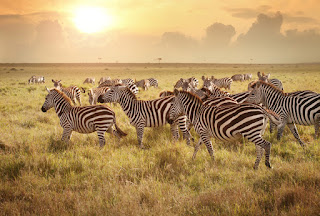Wildlife Conservation Breakthrough
AI -Enabled Documentation of Wild Kingdoms
Using Artificial Intelligence, researchers and scientists are able to spot and document wild animals in their natural habitat like never before. They're also able to count and identify them. They've developed an AI system that can automatically identify, count and describe animals in their natural surroundings in real time. The scientists believe this will significantly forward wildlife study and conservation. This tech animal adventure is being conducted by scientists from University of Wyoming, and Harvard University. It's a wildlife conservation breakthrough.
Motion-Sensor Cameras and Big Data
This is exciting breakthrough technology. It's inexpensive, unobtrusive and accurate. With motion sensor cameras, photographs are collected and described by neural networks. They've developed machine learning algorithms to do it with 97% accuracy to id, count and describe the wildlife,. The system is automated and provides details like how many of 48 species are present, what are they doing and are there babies present. They've used 3.2 million images of giraffes, lions, and other animals, many wildlife pictures from 50,000 people, to build the system. Scientists believe this could transform many forms of wildlife biology, ecology, conservation and zoology into "big data" sciences.
Conservation Bonanza
The process enables scientists to collect important wildlife data and will assist many fields of study, including ecology, zoology and conservation biology. University of Wyoming Assoc. Professor Jeff Clune commented: "This will dramatically improve our ability to both study and conserve wildlife and precious ecosystems." It's AI documenting and aiding the Wild Kingdom.
Using Artificial Intelligence, researchers and scientists are able to spot and document wild animals in their natural habitat like never before. They're also able to count and identify them. They've developed an AI system that can automatically identify, count and describe animals in their natural surroundings in real time. The scientists believe this will significantly forward wildlife study and conservation. This tech animal adventure is being conducted by scientists from University of Wyoming, and Harvard University. It's a wildlife conservation breakthrough.
Motion-Sensor Cameras and Big Data
This is exciting breakthrough technology. It's inexpensive, unobtrusive and accurate. With motion sensor cameras, photographs are collected and described by neural networks. They've developed machine learning algorithms to do it with 97% accuracy to id, count and describe the wildlife,. The system is automated and provides details like how many of 48 species are present, what are they doing and are there babies present. They've used 3.2 million images of giraffes, lions, and other animals, many wildlife pictures from 50,000 people, to build the system. Scientists believe this could transform many forms of wildlife biology, ecology, conservation and zoology into "big data" sciences.
Conservation Bonanza
The process enables scientists to collect important wildlife data and will assist many fields of study, including ecology, zoology and conservation biology. University of Wyoming Assoc. Professor Jeff Clune commented: "This will dramatically improve our ability to both study and conserve wildlife and precious ecosystems." It's AI documenting and aiding the Wild Kingdom.

%20(1)%20(1)%20(3)%20(2)%20(2).jpg)


Comments
Post a Comment